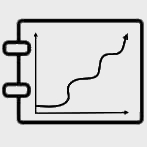Coding is an iterative approach. The more you code, the more you learn, and the more your coding speed increase. Why? Simply because there is less research, less experimentation, and more recycling and knowledge application. Here is a 5 steps method to take advantage of your experience and improve programming speed and efficiency.
1 - Sketch out the design or structure.
No matter the size of your assignment, small or big, use a tool to sketch out what you are about to code. For example, you can utilize UML (with Online Diagram Software & Visual Solution | Lucidchart), Graphic Design Tools (like Adobe Illustrator, Affinity Designer, ... )
YOUR BENEFIT: it helps visualize, communicate, and define the project and coding needs.
It's much faster to create a visual of a web page or UI with a graphic design tool than to code it. The same applies to software structure when using UML. You can also make several sketches and decide which is best suited for your needs.
It's an investment in time, but you reap the benefit at the end of the project and prepare your future in management.
2 - Use step 1 to plan and structure your code and infer the needed reusable components.
Use the sketch you have just done to define your code precisely and ask yourself:
- How will you structure your code
- Which tools, attributes, properties, classes, methods, etc. are needed?
- How can they be divided, grouped, named, etc.?
YOUR BENEFIT: minimize the number of lines to write and keep the structure clean.
3 - Develop and test your code step by step
DTake your time with coding and avoid monobloc. Divide your work into the smallest unit possible that can be tested to confirm it's working as you wish.
YOUR BENEFIT: it reduces your debugging/troubleshooting time and makes it much more manageable.
4 - Refer to the work you have previously done.
Refrain from repeating yourself. If there are components you have previously written and could use again, retrieve them. Ding in your past project or code database to import and adapt the reusable components into your code.
YOUR BENEFIT: You don't need to code it again; adapt it and save time.
5 - At the end of your project, take the time to reflect and refactor your code.
Now, the project is over. The code is running smoothly. So it's time to debrief and ask yourself:
- What did you learn?
- What would you have planned and structured differently?
- What code or object can you later reuse and archive them?
YYou can use a traditional file system or an application like the one provided by CodeNPaste: to store and retrieve your components. But remember that the more reusable components you have, the more convenient an app for retrieving them is. You can also share them if you have the right to do so.
Final word
Steps 1 to 4 - systematically helped me be significantly more efficient. Whenever I tried to outsmart these 4 steps and skip them, it resulted in longer production time and inferior results.
Step 5 - is the long-term approach to learning, organizing, and improving my coding skills.
This method works in many areas, not only coding.

